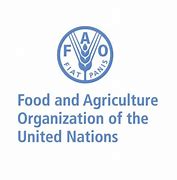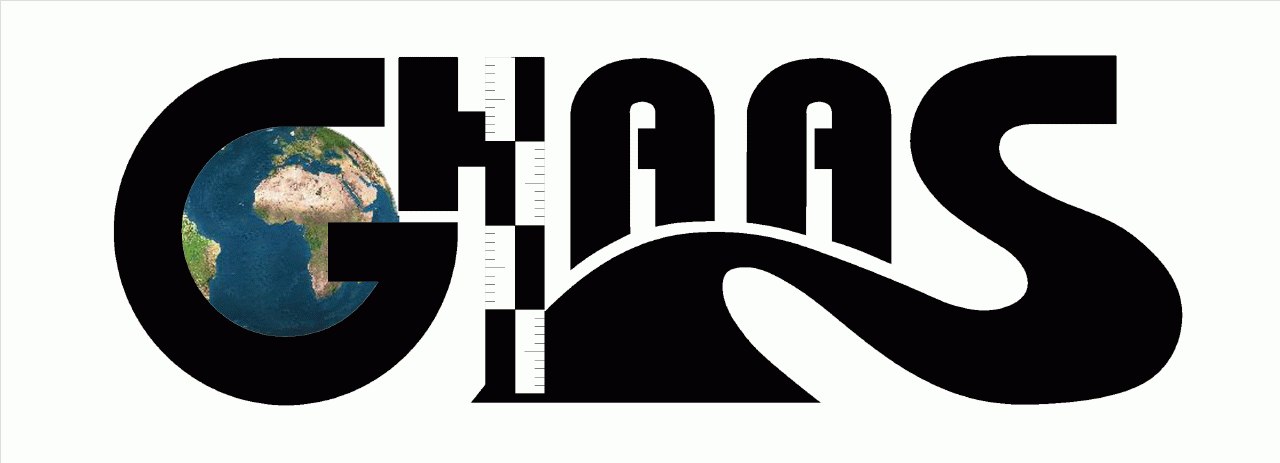CSV
Type of resources
Available actions
Topics
Keywords
Contact for the resource
Provided by
Years
Formats
Representation types
Update frequencies
status
Scale
Resolution
-

This is the FAO Fishery and Aquaculture Reference Data repository: Codes and reference data for fishing gear, species, currencies, commodities, countries and others.
-

The Pélagiques Gascogne (PELGAS, Doray et al., 2000) integrated survey aims at assessing the biomass of small pelagic fish and monitoring and studying the dynamics and diversity of the Bay of Biscay pelagic ecosystem in springtime. PELGAS has been conducted within the EU Common Fisheries Policy Data Collection Framework and Ifremer’s Fisheries Information System. Details on survey protocols and data processing methodologies can be found in Doray et al., (2014, 2018a). This dataset comprises the biomass (in metric tons) and abundance (in thousands of individuals) of small pelagic fish estimated during the PELGAS survey in the Bay of Biscay in springtime. The dataset also includes the estimation coefficient of variation, derived based on the hydroacoustic methodology described in Doray et al. (2010), and the survey area. Those estimates have been validated by the ICES WGACEGG group and provided to the ICES WGHANSA group for stock assessment purposes. Data have been used in Doray et al., 2018b.
-

Tracking data of 7 grey seals were obtained from the deployment of Fastloc GPS/GSM tags developed by the Sea Mammal Research Unit (UK). Full tag description is available at: http://www.smru.st-andrews.ac.uk/Instrumentation/GPSPhoneTag/. The tags include a wet-dry sensor from which haulout events are recorded, a pressure sensor providing detailed dive data, as well as a Fastloc GPS recording irregular locations when the seal is not underwater. Data is stored onboard and transmitted via the GSM network when the seal is in the reception range. The data provided here are the individual GPS locations of the seals fitted with these tags for an average duration of 135 days.
-

The willingness to pay (WTP) of people to protect animal populations can be used as a tool for these populations’ conservation. The WTP reflects the non-use value of animals, which can be significant for charismatic species. This value can be used as an economic criterion for decision-makers in order to recommend protective measures. The definition of the WTP to protect a species is challenging, as valuation methods are time-consuming and expensive. To overcome these limitations, we built a benefit transfer function based on 112 valuation studies and apply it to 440 Mediterranean marine species. We extracted these species from the IUCN database and retrieved some required parameters from, amongst others, the FishBase database. Marine mammals appear to have the highest WTP value followed in order by sea turtles, sharks and rays, and ray-finned fishes. Commercial fish species appear to have the highest values amongst the fish class.
-

SUCHIMED 2021 is the 10th campaign for monitoring chemical contamination and its evolution in the Mediterranean Sea. It has been designed as a platform supporting various surveillance and research activities, with the main pillar being the RINBIO network, which involves active biosurveillance through mussel caging. Regarding chemical contamination, the main results of this campaign are as follows: In Occitania region: - Chronic presence of DDT for 20 years. - Detection of terrigenous markers (Mn, As) between the mouths of the Aude and Hérault rivers, along with contamination of sediments near Port-La-Nouvelle by HAP and TCE (Pt). In PACA region: - PCB markers detected between the Rhône River and Marseille (in all matrices), originating from multiple sources with no significant changes over the past 20 years. - HAP contamination in sediments of the industrial-port zone in Fos. - Presence of TBT at the Carry-le-Rouet station above ecologically acceptable concentrations (EAC), to be confirmed in the next campaign. - Detection of metallic elements and HAP in sediments near the Marseille urban area, partly in plankton, along with TCE near the Cortiou wastewater treatment plant outfall. - Chronic marking of PCB, HAP, metals (Hg, Pb, Cu, TCE), PBDE, and/or organotin compounds (TBT) in Toulon Bay, showing no significant temporal trend over two decades for the first five compounds. - Detection of Cr, Mn, and Ni in the water column and HAP in sediments near the Var River mouth, with differences in contamination between matrices raising questions about organic matter origin. - Metal (including Pb) and HAP marking in the water column and sediment in Villefranche Bay. Around Corsica: - Strong influence of the island's geological background (i.e., high Cr and Ni content) on obtained concentrations. - Chronic marking of Cu in the water column in the ports of Porto-Vecchio and Bonifacio, stable over time, with HAP, metals (Hg, Pb, Zn), and to a lesser extent, PCB detection in Bonifacio sediment. - Marking of HAP and TCE in the sediment of the Bastia coastline. - Detection of Pb and TCE at the Golo River mouth. - Contamination of the Canari site with metals (Cr and Ni in the water column, Cu in sediment), and notably, confirmed ecotoxicity likely linked to these elements. The 2021 campaign highlighted the feasibility of researching effects on caged mussels using biomarkers. Lysosomal markers, less sensitive to trophic differences, proved to best reflect the general stress state of organisms related to their contamination. The study of trophic transfers appears to confirm the decrease in most metallic elements (Cr, Cu, Fe, Mn, Ni, Pb) and HAP, bioamplification of Hg and PCB, and specific bioaccumulation of certain elements by organisms (e.g., As or Zn by mussels, HAP by plankton). Finally, the campaign revealed the presence of micro and mesoplastics at almost all sampled sites. The measured microplastic values align with concentrations observed in the western Mediterranean, with a trend towards reduction based on available 10-year data.
-

The general objective of the PEACETIME cruise is to study the fundamental processes and their interactions at the ocean-atmosphere interface, occurring after atmospheric deposition (especially Saharan dust) in the Mediterranean Sea, and how these processes impact the functioning of the pelagic ecosystem. During the proposed 33 days cruise in the western and central Mediterranean Sea in May 2017, we will study the impact of atmospheric deposition on the cycles of chemical elements, on marine biogeochemical processes and fluxes, on marine aerosols emission and how ongoing changes will impact the functioning of Mediterranean Sea communities in the future. The cruise is designed to explore a variety of oligotrophic regimes. Combining in situ observations both in the atmosphere and the ocean, and in situ and minicosm-based on-board process studies, the 40 embarking scientists from atmosphere and ocean sciences will characterize the chemical, biological and physical/optical properties of both the atmosphere and the sea-surface microlayer, mixed layer and deeper waters. The PEACETIME strategy (season and cruise track) associated to a combination of dust transport forecasting tools and near real-time satellite remote sensing is designed to maximize the probability to catch a Saharan dust deposition event in a stratified water column in order to follow the associated processes in-situ. This coordinated multidisciplinary effort will allow us to fill the current weaknesses/lacks in our knowledge of atmospheric deposition impact in the ocean and feedbacks to the atmosphere in such oligotrophic systems. As a key joint-project between MERMEX and CHARMEX : The PEACETIME project comes in the scope of the regional multidisciplinaryprogramme MISTRALS (Mediterranean Integrated STudies at Regional And Local Scales ), which aims at predicting the evolution of this region following strong expected changes in climate and human pressures. In this framework, the PEACETIME project constitutes a key joint project between the ChArMEx (the Chemistry-Aerosol Mediterranean Experiment) and MERMEx (Marine Ecosystems Response in the Mediterranean Experiment) initiatives, enabling to gather communities of atmospheric chemists and marine biogeochemists around the common question of assessing the impact of atmospheric deposition on the marine biogeochemical processes and air-sea exchanges.
-

REPHYTOX dataset includes long-term time series on phycotoxins in marine bivalve molluscs, since 1987, along the whole French coast. The dataset covers results on lipophilic toxins, PSP toxins, ASP toxins, and palytoxins. REPHYTOX was a full part of the REPHY network until 2015. The whole dataset is available.
-

This dataset gathers isotopic ratios (carbon and nitrogen) and concentrations of both priority (mercury species and polychlorinated biphenyls congeners) and emerging (musks and sunscreens) micropollutants measured in a host-parasite couple (hake Merluccius merluccius muscle and in its parasite Anisakis sp) from the south of Bay of Biscay in 2018. In addition, the hake infection degree measured as the number of Anisakis sp. larvae was added for each hake collected.
-

-

The Pélagiques Gascogne (PELGAS, Doray et al., 2000) integrated survey aims at assessing the biomass of small pelagic fish and monitoring and studying the dynamics and diversity of the Bay of Biscay pelagic ecosystem in springtime. PELGAS has been conducted within the EU Common Fisheries Policy Data Collection Framework and Ifremer’s Fisheries Information System. Details on survey protocols and data processing methodologies can be found in Doray et al., (2014, 2018). This dataset comprises the abundance (no. of individuals), biomass (metric tons), mean length (cm), mean weight (g) of marine organisms collected by midwater trawling to identify fish echoes detected during PELGAS surveys (2000-2018). All parameters have been raised to the trawl haul level. Trawl haul metadata and species reference list are also provided.
 Catalogue PIGMA
Catalogue PIGMA